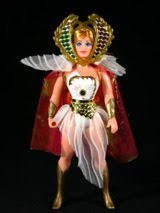
Neato! This is a book of three unique poems for four voices. I've seen poetry books for two voices, but not FOUR!! Wouldn't it be great to see four students sitting down together practicing this poem... perhaps after reading they could write their own poem for four voices. What would each voice say? And, How does it interact with the other voices? What a fun project this could be for students who enjoy this kind of poetry! Or maybe you could project the poem onto the projector screen, and dividing the class into sections, read the poem as a whole. Or maybe you would have the kids decide how to divide the speaking roles. SO MANY classroom applications...
Fleischman's book is really confusing for one individual. The poetry only works properly when there are four people working together. I had to get some help reading this book. I took it with me to my mom and dad's house over the weekend. My mom, dad, sister, and I read the book together. It was hilarious. The poems are really chaotic and this is accentuated when there are four individuals trying to coordinate their rhythms and tempos. Good Times!
I guess it takes practice to read something like this. There are hints for reading it in the beginning of the book, however I still struggled at first. When we finally got it right, it sounded so cool. The words were all of a sudden filled with power and emotions.
My favorite of the three poems in this book was called, "Seventh Grade Soap Opera." It was like taking a step into the past. The poem captures the drama of the seventh grade that was so familiar. I'm not sure though, I really liked the one called, "One Quiet Evening Here" too. It was funny because, the evening was not really all that quiet with my entire family trying to get the hang of the four-voices thing. In this poem Fleischman uses really interesting choices in words to describe the "QUIET" evening. The final poem is about ghosts, we read it in "scary" voices, but laughed the whole time.






